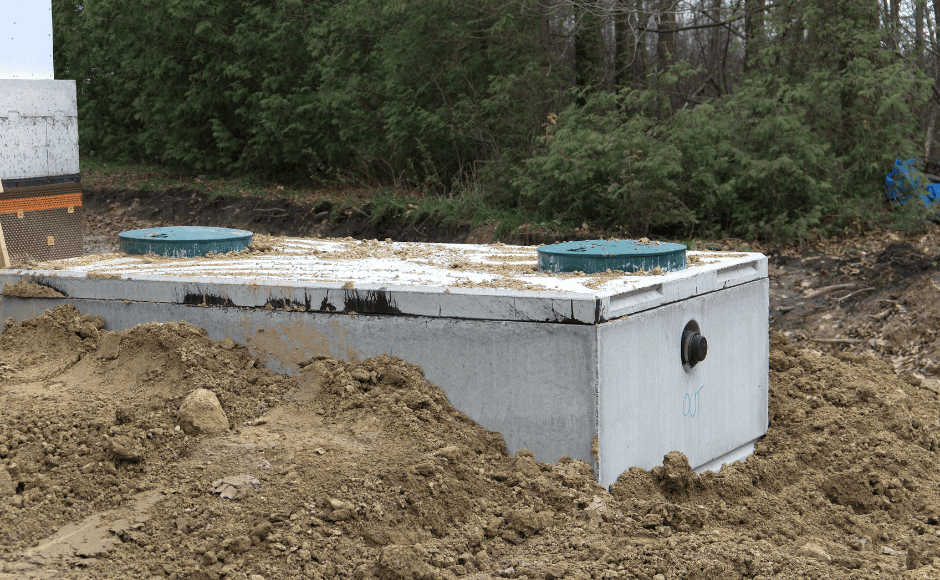
Septic systems are essential for managing wastewater in areas without municipal sewer. Knowing more about how septic systems work can help you understand the importance of proper use and maintenance for ensuring the health of your home and protecting the environment.
How does a septic system work?
The design and size of a septic system can vary widely due to a variety of factors. These factors include household size, soil type, site slope, lot size, proximity to surface water bodies, weather conditions, or even local regulations. Conventional septic systems utilize gravity to transport wastewater from the home to the drainfield for treatment, while advanced systems may incorporate pumps, alternative media, and aerobic treatment units to transport and treat wastewater.
A conventional septic system includes a septic tank and a drainfield. Wastewater from household activities flows through your home’s plumbing into the septic tank, a buried, watertight container typically made of concrete, fiberglass, or polyethylene. Inside the tank, solids settle to the bottom forming sludge, while oils and grease float to the top as scum. The tank’s design prevents these solids from entering the drainfield.
The liquid wastewater, or effluent, exits the tank into the drainfield—a shallow, covered excavation in unsaturated soil. Here, the effluent is discharged through piping onto porous surfaces, allowing it to filter through the soil. This process naturally removes harmful bacteria, viruses, and nutrients as the wastewater percolates into the ground, ultimately reaching the groundwater.
Maintenance considerations
Regular maintenance of your septic system is crucial to maintain the health of your home environment. This includes periodic pumping of the septic tank to remove accumulated sludge and scum, typically every three to five years depending on usage. Proper maintenance ensures the longevity of the system and protects environmental and public health.
Additional septic system education resources
Learn more about your septic system, how it works, and how to properly care for it through the Michigan Department of Environment, Great Lakes, and Energy’s (EGLE’s) onsite wastewater management website. The Environmental Protection Agency’s SepticSmart program also offers several free, downloadable resources with helpful reminders about maintaining your septic system.
Get financing for septic system replacement with Michigan Saves
If you’ve noticed the signs of a failing or near-failing septic system, Michigan Saves can help you with a septic system replacement through the Septic Replacement Loan Program, created in partnership with EGLE. You can access two loan tiers to help finance your septic system replacement. Get started by connecting with one of our authorized septic installation contractors.




